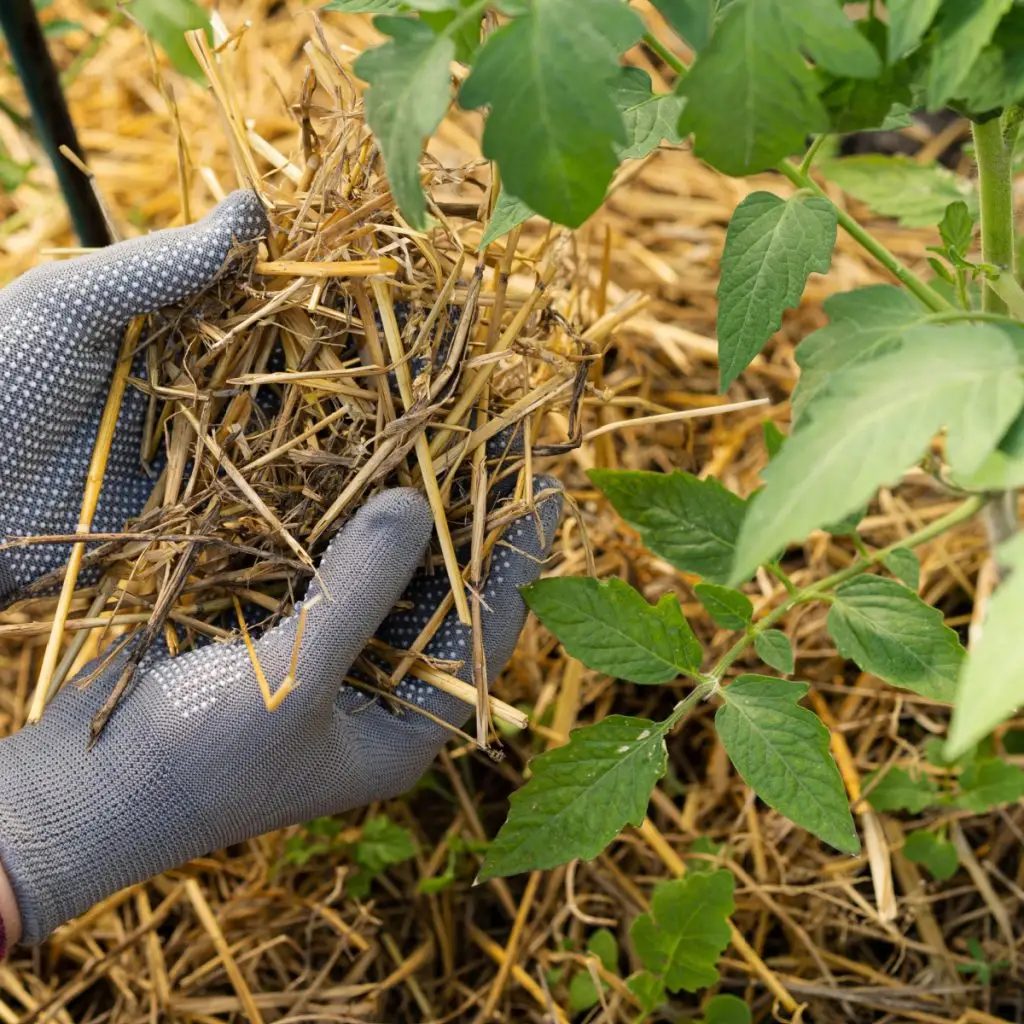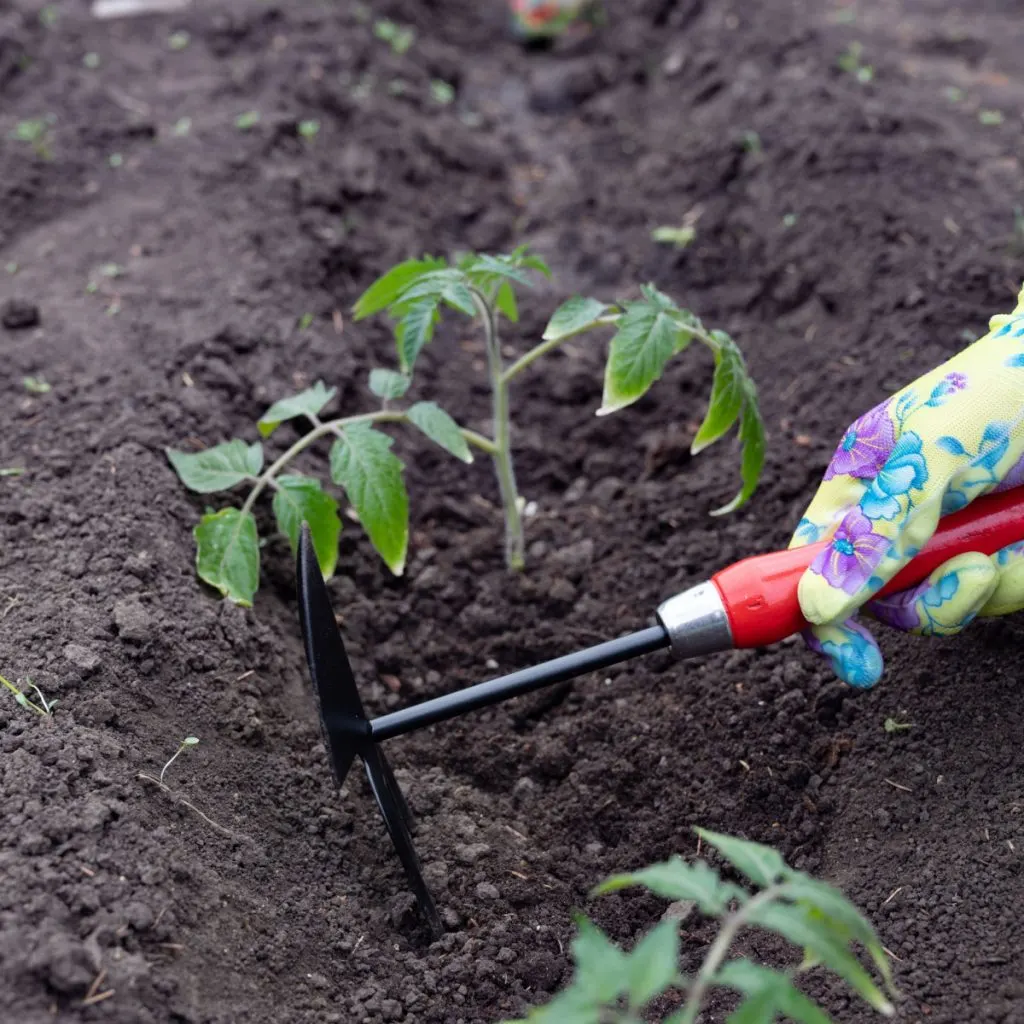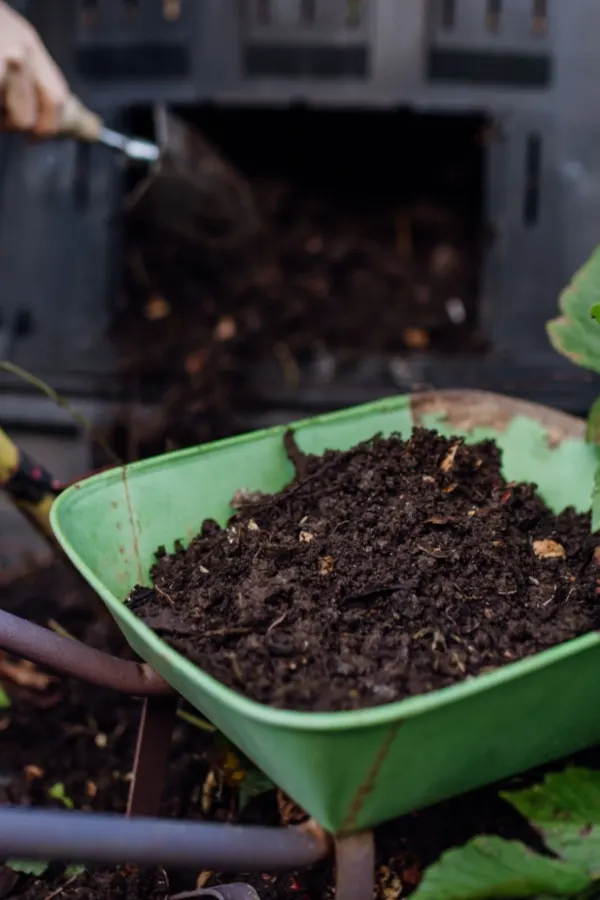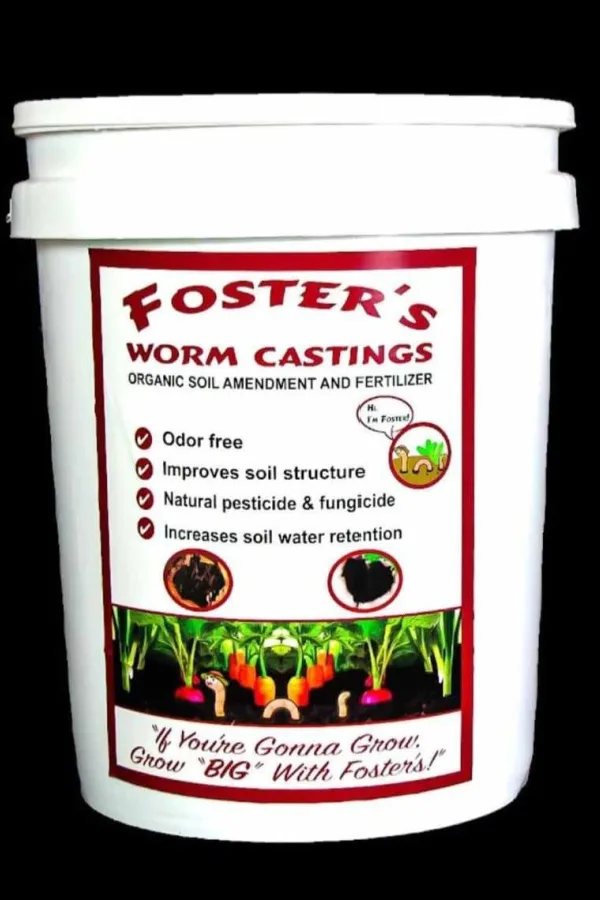Looking for the best way to mulch your tomato plants this year to stop weeds and give your plants all of the extra power they need to thrive at the same time?
Believe it or not, mulching your tomato plants is one of the most important things you can do to help them grow strong, healthy, and productive. A good layer of mulch does much more than just make your garden look neat – i t can also play a major role in keeping your tomato plants happy and safe throughout the growing season.
When done correctly mulching can help the soil hold on to moisture, keeps weeds from growing, and even help regulate the soil’s temperature. All of which happen to be very important when it comes to growing tomatoes. But perhaps best of all, if you mulch with the right materials, you can also feed and power your tomato plants every time you water or it rains.

Why Mulching Is So Important For Tomato Plants
Tomatoes need consistent moisture, warm soil, and room to grow without competition. And mulching helps with all three of those vital needs.
One of the biggest benefits of mulch is moisture retention. Tomato plants don’t like to dry out,. Unfortunately, when the hot summer sun beats down on bare soil, moisture can evaporate quickly. But a good layer of mulch helps stop that from happening.
It acts like a protective cover for the soil, keeping it cool and moist underneath. This not only helps your tomato plants, it also means you don’t have to water as often. Best of all, your tomato plants won’t struggle through periods of dryness.
Mulch also helps regulate soil temperature. During the summer, the soil can heat up fast, especially during long stretches of hot days. Just like a thick blanket protects you from the cold in winter, mulch helps protect the soil from extreme heat.
It keeps the roots of the tomato plants at a more even temperature. This causes far less stress, helping them grow strong and healthy. And on cooler nights? Mulch helps again by holding in the warmth from the day, giving your tomato plants even more of a boost.

Protecting Your Tomatoes From Weeds & Disease
Another big advantage of mulch is that it keeps weeds out. Weeds compete with tomato plants for water and nutrients. If weeds are growing all around your tomato plants, they’ll steal the moisture and food your tomatoes need to thrive. Mulch blocks sunlight from reaching the soil surface, which keeps most weed seeds from sprouting in the first place.
Mulching also helps protect tomato plants from soil-borne disease. When it rains or when you water, droplets can splash up from the ground and carry bacteria or fungal spores onto the lower leaves of your plants. A layer of mulch acts like a barrier, stopping that splash and helping your plants stay safe.
But how and what you mulch with matters. And that is why knowing how to put just the right amount and type of mulch on your tomato plants is the real secret to mulching success!
The Best Way To Mulch Tomato Plants
While any mulch is better than none, there’s a method that not only protects your tomato plants, but also powers them with nutrients all season long. And it works like a charm!
For starters, add a layer of compost around the base of each plant. Spread the compost in a circle about 12 to 18 inches wide. It’s best to make this about 2 inches thick. Compost will serve as the base layer of your mulch. And is it ever a powerhouse of nutrients for your tomatoes!

Not only does compost help hold in moisture, it also acts as a slow-release fertilizer. Every time it rains or you water the plants, nutrients from the compost soak into the soil below and feed the plant’s roots. But that same compost also helps to hold in more moisture too. See our article: 3 Great Ways To Use Compost To Power Your Tomato Plants This Year
The Magic Of Worm Castings
After putting down the layer of compost, it’s time for worm castings! Worm castings are one of the best all-natural fertilizers you can use to help mulch tomato plants. They are full of nutrients and organic matter that help tomato plants grow stronger roots and more fruit.
Just like the compost, worm castings will leach down into the soil slowly, giving your tomatoes a little boost each time you water. For the castings, sprinkle one-quarter to one cup of worm castings per plant directly on top of the compost. Affiliate Link: Foster’s 100% Pure Worm Castings
Once your compost and worm castings are in place, it’s time to add the top layer of mulch. For this mulch, it’s best to use one of three great organic choices – straw, grass clippings, or shredded leaves. This needs to be a thick layer to give all the protection your tomato plants need.

Picking The Right Top Mulch
Whether you use grass clippings or shredded leaves – there are a few things to look for with each. When using straw, look for clean, seed-free straw so you don’t introduce weed seeds into your garden. Straw is light, easy to spread, and decomposes slowly, making it one of the best materials to mulch tomato plants
If you’re using grass clippings, make sure the grass has not been treated with any kind of lawn chemicals or weed killers. Fresh grass clippings are rich in nitrogen, but they can mat down if applied too thick. If they’re a bit wet, spread them in thinner layers at a time and let them dry out slightly before adding more.
Shredded leaves also make excellent mulch. If you collect your leaves in the fall, shred them with a mower or leaf shredder before storing them in bags or a compost pile over winter. By spring, they’ll be broken down enough to make a perfect, soft mulch that holds moisture and keeps weeds down.
Put down four to six inches of your top mulch material over the compost and castings. Mae sure to cover the entire area around the base of the plant. The mulch should extend at least a foot in every direction from the plant’s stem.
It’s important to leave a few inches of open space around the main stem of the tomato so it can breathe and stay dry. You don’t want mulch packed right up against the stem because it can cause rot and invite pests.
Giving Your Plants Perfect Protection
The method of layering compost, worm castings, and mulch works so well because it does more than just cover the soil – it actively improves it.
Each time you water or it rains, nutrients from the compost and worm castings wash down into the soil and feed the roots. The thick top layer of mulch keeps everything in place. It holds in the moisture, protects the roots from heat, and keeps weeds from popping up.
As the organic mulch breaks down during the growing season, it adds even more nutrients to the soil, continuing to improve it day by day. Even better, this method helps create a healthy soil for future seasons.
Here’s to giving your tomato plants the best layer of mulch around – and to a great tomato crop this year!
I Grow Tomatoes
Follow Our Facebook Page For Even More Great Tomato Growing Tips! I Grow Tomatoes Facebook Page
I Grow Tomatoes is a website created for those who love all things about tomatoes – from planting and growing – to cooking and canning! We publish two articles every week, 52 weeks a year. Sign up today to follow via email! This article may contain affiliate links.
